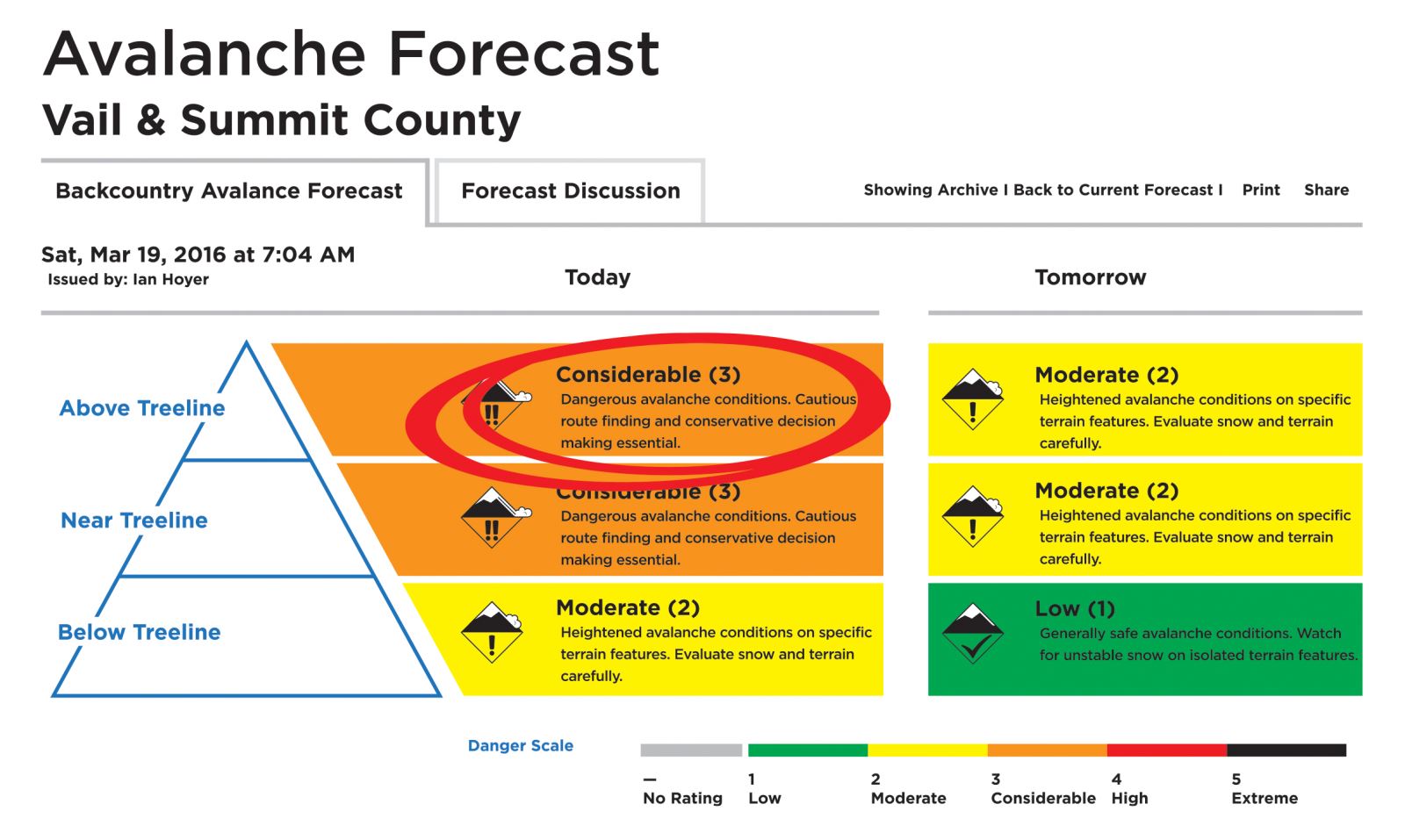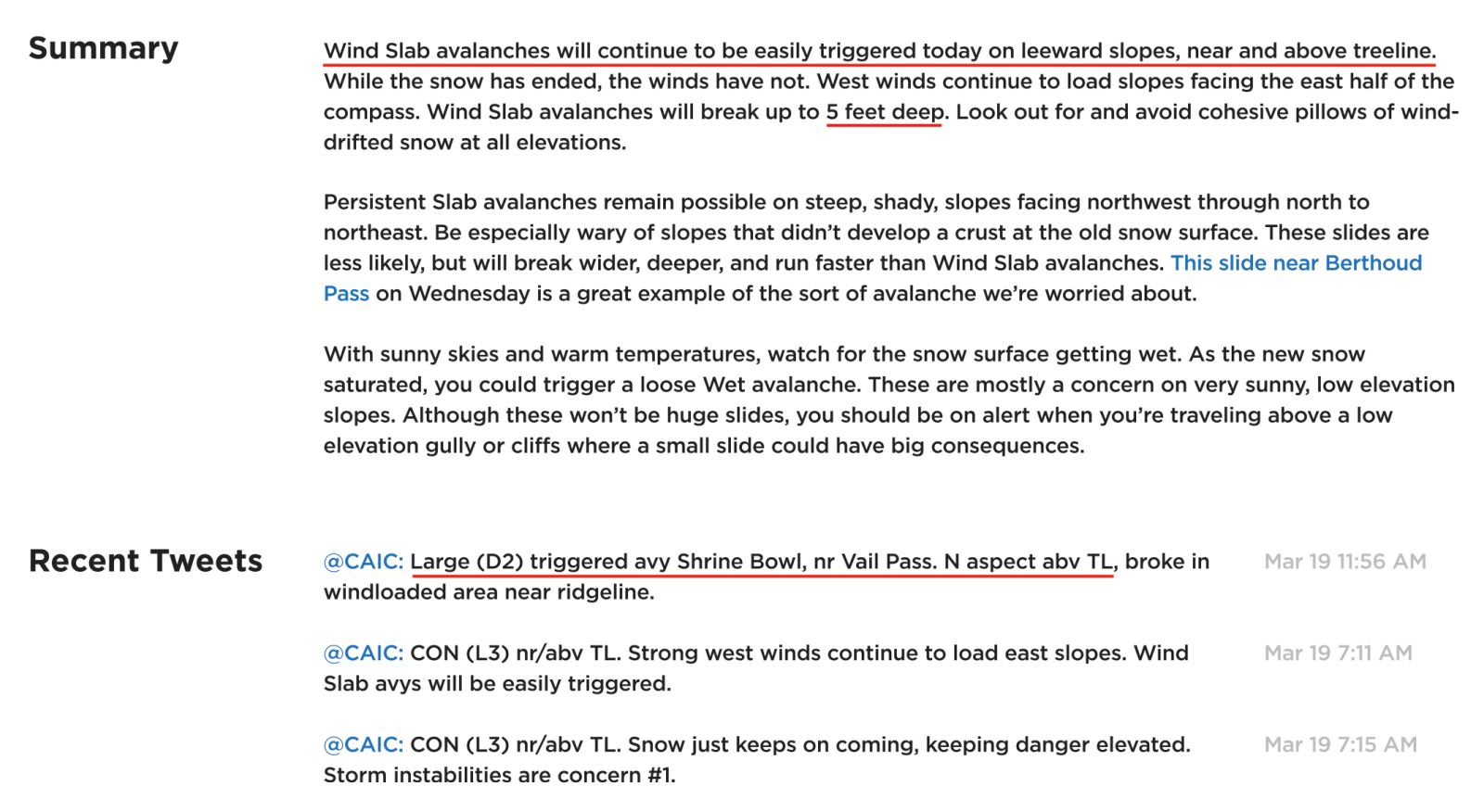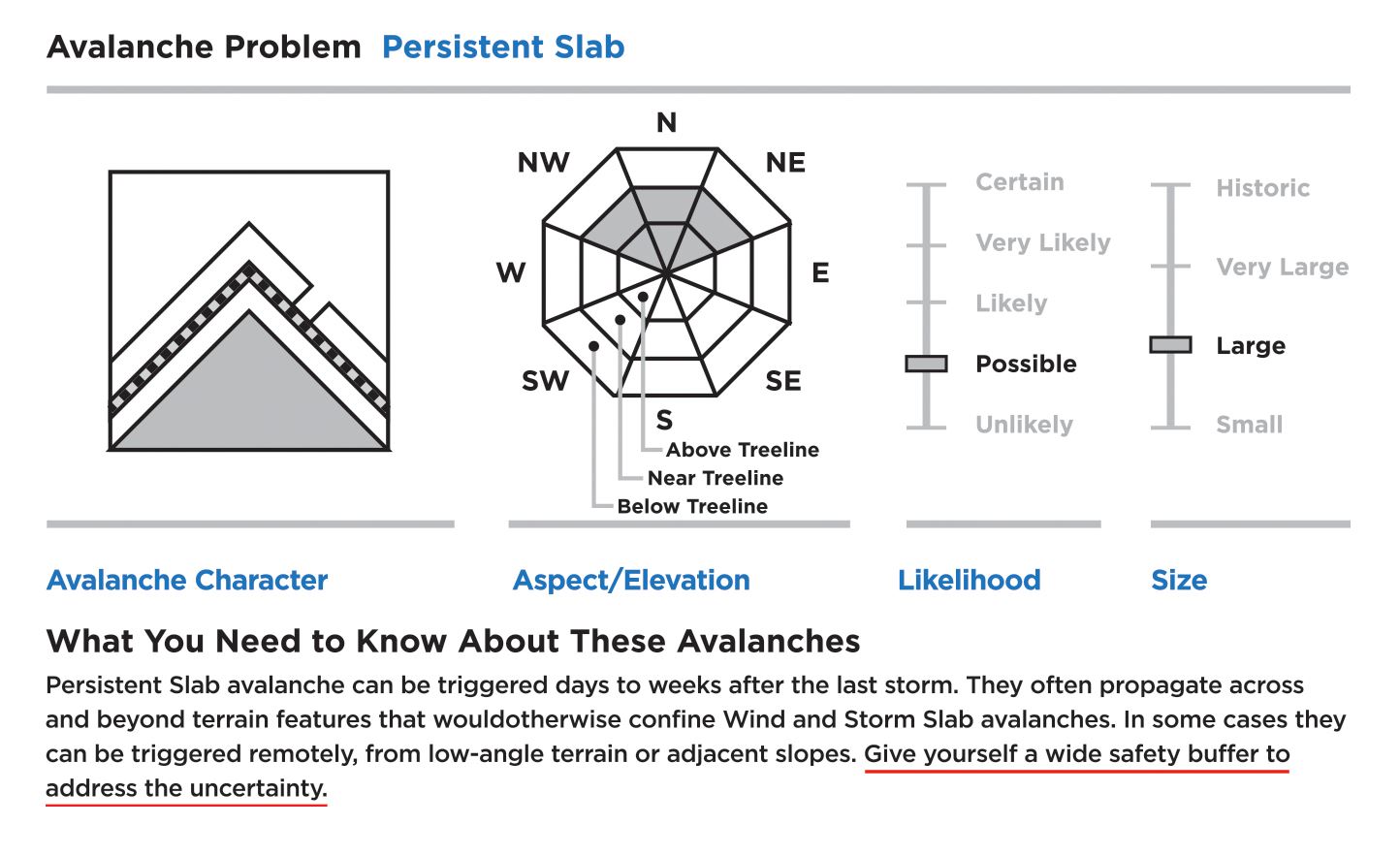Reading the Forecast
Look beyond the danger rating, read what type of avalanche problems you’re dealing with and read the summary. Here’s an example:
Figure A:
This doesn’t tell you the real story.

Figure B:
This is one thing you need to read. The summary: Does it tell you not to ride? No. It is recommending the terrain to avoid. This is great information. These forecasters take their job seriously and want to help you. I would suggest following what they say.

Figure C:
Now you’re getting more of the story, you know the issues you will be dealing with. You can click on the avalanche problem and get more information.

Three Points To Know
When you read the forecast, you need to understand the avalanche problems you are dealing with.
- Is the weather contributing to the avalanche problem?
- Is the avalanche danger likely to increase during the day?
- Eliminate areas for riding after checking 1 and 2. Communicate this to your riding group and discuss. Make sure everyone is on the same page.
Many riders act as individuals riding together in a group. You’re more effective as a team working through avalanche terrain. You’re having fun and should be accountable for each other.
Your riding history in the area is irrelevant. No two winters are the same; each year is a different and the layers within the snowpack/stability are different. Check the forecast to see what the current conditions are.
Remember: the avalanche forecast is a starting point. You need the skills to observe and determine what is really happening. Forecasts cover a large area and conditions can vary within the forecast area.
How reliable is the forecast for your area on this day?
This is a brief introduction. However, it takes much more than reading an article to determine which terrain to ride for the avalanche problems. I’ve never had someone take a 24-hour level I avalanche class and regret it. Most say they should have taken it years ago and it’s the best money spent on the sport.
Never stop learning and pick your riding partners carefully. Have a great winter.
Avalanche forecast websites: (Canada) www.avalanche.ca or (United States) www.avalanche.org.
Apps: Avalanche Forecast
Backcountry Beta. (Your local avalanche center in the U.S. may also have one.)
EDITOR’S NOTE: Mike Duffy offers professional avalanche education for mountain riders. He can be contacted at www.avalanche1.com.)